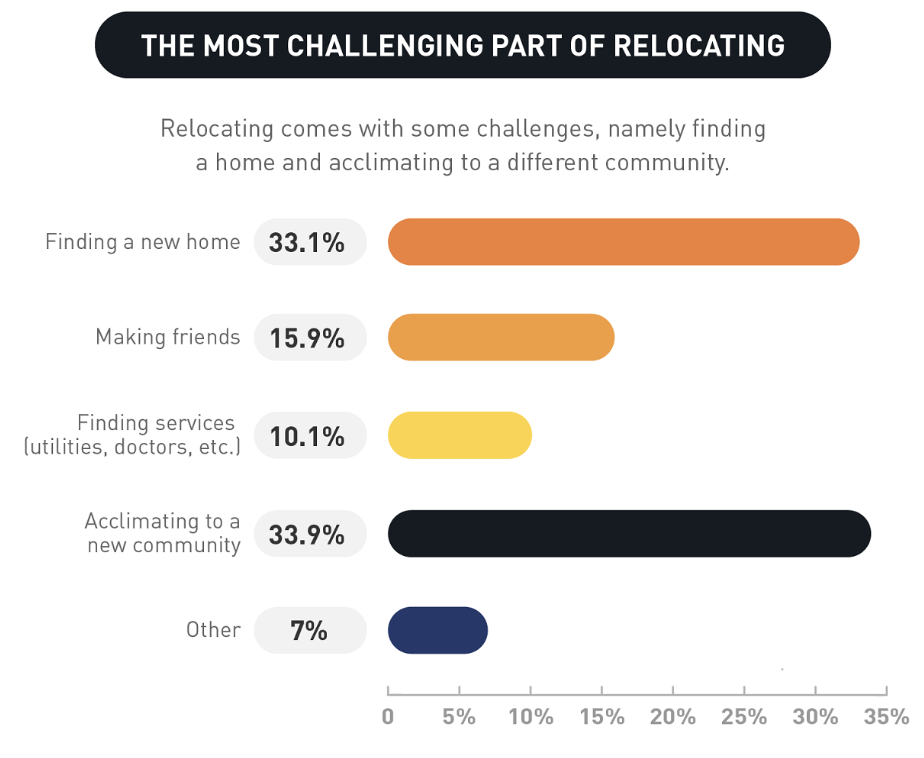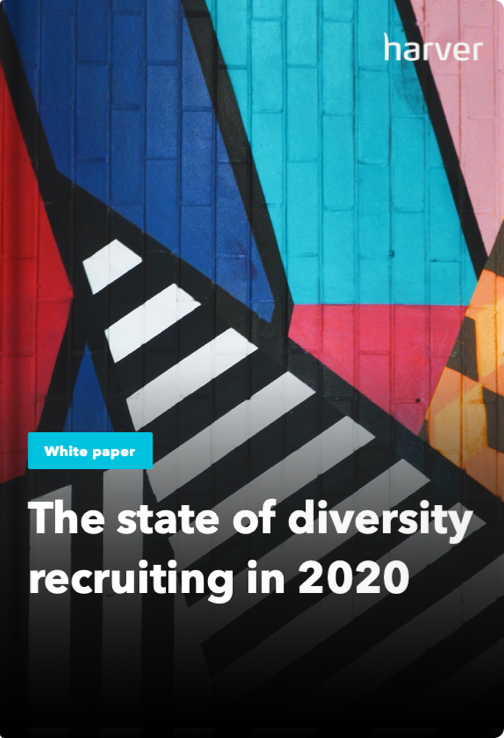The research study conducted by CEMS shows that almost half of HR managers struggle to find and recruit top global employees.
Why is this so?
Well, there are many barriers employers face when hiring international staff, including finding quality employees, tough timelines, the lack of relevant resources, dense visa requirements, and so forth.
This is why you need to have a solid recruitment strategy when hiring international talent.
Here are a few things to know.
What’s in?
- Build a global talent brand
- Start hiring global talent at the right time
- Consult a lawyer
- Understand your visas
- Address foreign employees’ needs
Like what you see?
Don’t miss out. Subscribe to our quarterly digest to get the latest TA and TM resources delivered right to your inbox.
1. Build a global talent brand
In today’s overcrowded market, to attract top international talent, you first need to build a solid employer brand. Statistics say that 75% of candidates will analyze your company’s reputation before applying for a job.
For starters, you need to formulate a solid, multi-channel recruitment strategy.
Start by building your website.
Ask yourself what a candidate should see when landing on your site. For starters, you need to work on its design. Make it pleasant to the eye when choosing colors, fonts, and logos. Lots of disturbing ads, auto-play content, and links will only frustrate a visitor and make them leave immediately.
Your site should also be responsive and user-friendly, irrespective of a visitor’s device. Make sure that your contact information and social buttons are easily visible. You should also test your contact forms and see whether they work properly.
Check out the best career pages of 2019 to get inspiration for your own international career site!
Have a detailed “About Us” or “Our Mission” page, where you explain who you are, what you do, and how you’re different from similar brands. Emphasize your core values and missions that drive your organization and connect its members. To build trust with audiences, you should also have a page dedicated to your employees, where you would share their stories and testimonials, inform visitors about your training programs, explain employee benefits, and share job postings.
Provide a thorough FAQ page, as well as live chat support, where your prospective candidates can ask questions and get answers fast.
Don’t forget to optimize your site for search engines. Consider combining SEO and PPC to increase brand awareness and grow your reach in the competitive SERPs. Implementing a couple of recruitment marketing strategies will help you boost your online visibility.

62%
of female Millennials feel that international experience is critical to further their career.
Source: PwC
…and 71% would like to work outside their home countries during their career. That’s why they can be a great source of international talent and a target of your employer branding efforts.
Next, take advantage of social networks. In addition to sharing your job postings on Facebook, Twitter, or Instagram, you should also build your employer brand on LinkedIn. This is the largest professional network that will make you visible to thousands of candidates. Share valuable content, answer users’ questions professionally, and join relevant communities to boost reach and position yourself as an authoritative resource.
Grow online presence on relevant international platforms. There are numerous online business directories, such as Yelp, BBB, or Angie’s List you should use. When registering, make sure you share accurate and consistent business information.
2. Start hiring global talent at the right time
Many business owners decide to start hiring global talent right away. If you’ve recently launched a startup and now want to attract international workers, you should rethink your strategy for a few reasons.
First, to hire global staff, you need to start domestic. Your goal should be to hire local workers and, at the same time, invest in your company’s inclusion and diversity. Candidates’ nationality, religion, age, or gender shouldn’t concern you, as long as their skills meet your company’s needs.
Look into previously untapped talent pools such as employees with disabilities. No matter how motivated, experienced, and knowledgeable they are, the disabled usually find it difficult to land a meaningful and profitable job. So, for starters, you could partner with a disability employment organization.
For example, the US-based organization Enable America or Australian atWork Australia are dedicated to bridge the gap between employers and disabled job seekers and can help you find the candidate with the right skills and attitudes. Only by improving your company’s culture locally will you be able to expand to the global market and position yourself as a highly diverse organization.
Second, you need to consider the needs and expectations of global workers. You’re asking a foreign employee to give up their current job and move to a completely new country (or even a continent) to work for you. To provide them with the conditions and tools they need, you first need to have a fully established organizational structure, experience, and a solid plan.

32%
of HR directors expect global workforce mobility to have a high or very high impact on their workplaces.
Source: HR 2020 Report
Global workforce is becoming more and more mobile, reshaping the workplaces all around the world.
3. Consult a lawyer
When hiring international employees, you should first learn more about their countries’ employment regulations. Most of these legal aspects vary across countries and you want to make sure that everyone is on the same page.
Just look at the at-will employment relationship. In the U.S., this regulation simply means that both an organization and a worker can terminate the employment relationship immediately. Before you offer anything to an employee and send them an employment contract, research what the employment regulations in their country are and what the criteria for the termination of the employment relationship are. Take your time to explain the differences to your candidate.
The same applies to Paid Time Off. In the U.S., the PTO policy combines sick days, personal days, vacation days, etc. The PTO policy usually doesn’t let employees carry forward unused days. In some European countries, for example, vacation days and sick days are completely separated.
This is exactly why you should consult a legal advisor to help you understand the differences in employment regulations. It’s always a good idea to hire an immigration attorney, as they will give you some incredible insights and flag any problems you may face when recruiting international staff.

88%
of highly successful relocation packages cover moving expenses.
Source: Allied Van Lines
Even if you’re not legally obliged to provide relocation packages, it will help you attract international talent. Covering moving expenses is the most popular form of relocation assistance.
The state of diversity recruiting in 2020
4. Understand your visas
Work visa requirements for employers and employees differ per country and also per type of role. They also involve various costs.
In the US, there are a few basic work visa types every employer should be aware of.
The first one is H-1B that requires a bachelor’s degree or higher. With this visa type, an employee qualifies to stay in the country for three years and, when the visa expires, they can potentially extend it. After six years, they need to leave the US and live in another country for at least a year to reset their visa. This is tricky, as you will require an employee to give up their job and work for you for a limited period. Even if that works for your candidate, short-term relationships may harm your overall productivity and culture.
Second, the J visa is focused on long-term internships. A foreign citizen comes to the US, works there in a certain industry for at least 18 months, and then gains a specialty that will be accepted in their country. It helps you hire skilled and enthusiastic people. However, you should know that applying for the J visa can be extremely complex. Namely, your organization will need to fill out a mountain of documents and describe how the intern’s training program will develop each month. You will need to explain how their personal and professional development will be achieved and what skills they will gain.
Third, the L-1 visa is used by international companies that transfer employees working in their branch, parent company, or affiliate, to the US. To be approved, an employee needs to work for your organization for at least three years. There are two basic types of the L-1 visa – L-1A for managers and L-1B for employees with specializations in certain niches.
Finally, there is also the TN visa, created by The North American Free Trade Agreement (NAFTA). It’s available to Canadian and Mexican employees that want to come and work in the US. It has become extremely popular in Silicon Valley, as it allows tech startups to hire talented and motivated graduates coming from prestigious universities.
Consider which visa option would be best for the international talent you’re aiming to hire and be prepared to start applying, as it might be a lengthy process and you want to have your new hires on board as soon as possible.

Searches for visa-related jobs on Indeed.com jumped
673%
as the US immigration policies tighten.
Source: HR Dive
Currently, H-1B denial rates are up by a wide margin. Bear that in mind if that’s the type of visa you’re considering for your new international hires.
5. Address foreign employees’ needs
Hiring a foreign employee is not easy. To win the employee over, you need to demonstrate your dedication and prove that you’re serious about hiring them.
For example, prove that you’re eager to go through this entire hiring process just to hire them. Foreign employees are aware of how big this step is in their lives, so know that most of them will prepare themselves for the interview. They know a lot about their obligations and roles, but they also know what it is expected of you as an employer during the hiring process.
Talk to a candidate about the documents they will need to provide, as well as about the relevant employment policies and regulations they should be familiar with. Introduce them to your immigration attorney that will answer all legal questions and help them make their decision faster. Building transparent and honest relationships with an employee from day one is immensely important.
Also, never underestimate the time and energy a foreign employee needs to adapt to a new culture and workplace. For starters, you need to understand the phases foreign employees usually go through. First, they’re super-excited about exploring new ways of living, learning more about new cultures, and meeting new people. However, when the excitement phase dies down, a foreign worker may face a culture shock and feel lost. In such situations, an employee may simply decide to give up their job and go back.
This is when you, as an employer, step in. Your goal is to prepare an employee and make the entire relocation process easier for them.
For starters, before even asking them to move, you should describe your corporate culture to them and send them lots of materials that will help them understand the place they’re relocating to. If possible, encourage the candidate to visit you. This is how you and your team will get to know them better. Most importantly, you will assess their ability to fit in their new culture, both in the workplace and outside of it.
However, your job doesn’t end once you hire an employee. This is when you should support them. In addition to preparing them for a new culture, you should learn about their culture as well. Familiarize yourself with the country they come from and its culture and customs. If there are any obvious cultural variations that may pose a problem in the future, address them right away. Keep in mind that workplace collaboration, conflict resolution, employee feedback, employee loyalty, and similar factors may also depend on the employee’s culture.
Only by building a tight collaboration between your organization and your foreign employees will you be able to help them overcome this emotional phase.

Relocatees face multiple challenges when they move to a new country. Think about ways how you can help your employees acclimatize faster or assist them in finding a new home.
Over to you
When hiring international employees, you will need to pay attention to a bunch of factors, from legal regulations to foreign employees’ well-being. Still, if planned strategically, recruiting global talent will benefit your organization on multiple levels. It will help you overcome skill gaps, improve your company’s diversity and inclusion policy and, above all, make unique and innovative teams.
Before you make such an important move, have a plan, hire an experienced attorney, and learn about relevant regulations and visa requirements. Make sure that your company is ready for hiring global staff. For starters, hire domestically and focus on building a diverse team. Finally, don’t forget that it’s all about making your employees happy. Prepare them for relocating, inform them about their new culture, and help them feel like a part of your culture.
Happy international hiring!
| About the Author: Jacob Wilson is a business consultant, and an organizational psychologist, based in Brisbane. Passionate about marketing, social networks, and business in general. In his spare time, he writes a lot about new business strategies and digital marketing for Bizzmarkblog.com. |
The state of diversity recruiting in 2020



